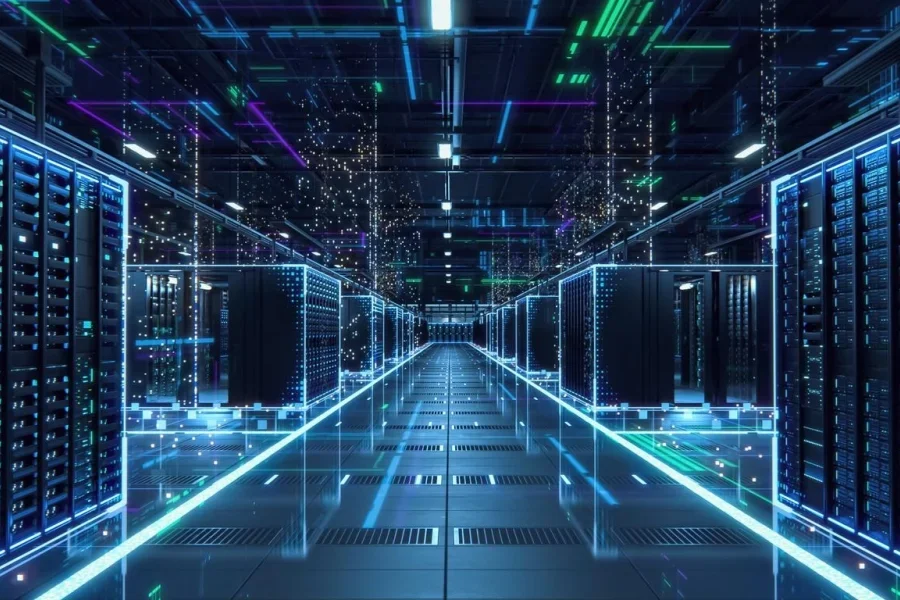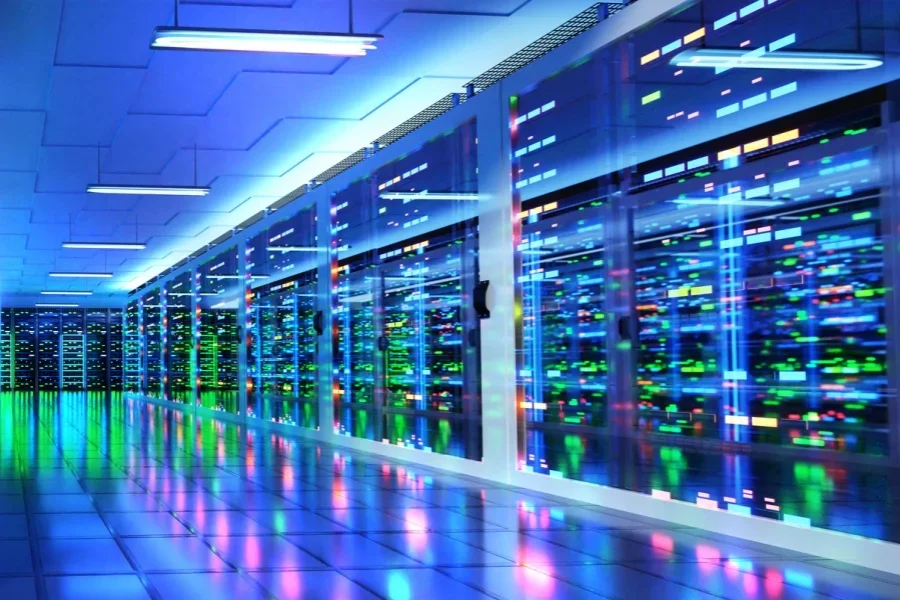Table of Contents
1. Introduction
2. Understanding the main server types
3. Market trends in server technology for 2025
4. Key factors when choosing a server
5. Top server models and their features
6. Conclusion
Introduction
Servers are at the heart of modern business infrastructure, playing a vital role in data storage, application hosting, and network management. For businesses in 2025, the evolution of server technology brings new opportunities for efficiency and scalability. Whether handling massive workloads or facilitating remote operations, servers are now more powerful, energy-efficient, and secure than ever before. As businesses grow, selecting the right server type—be it dedicated, virtual, or cloud—ensures seamless operations, data security, and adaptability to meet future demands.
Understanding the main server types

Dedicated servers
Dedicated servers are the go-to option for businesses needing exclusive resources and high-performance computing. They offer unparalleled processing speed since the entire server’s hardware is dedicated to a single organization. This makes them ideal for industries handling large amounts of data, real-time analytics, or security-sensitive operations. With full control over hardware and software configurations, dedicated servers are highly customizable and reliable, ensuring maximum uptime and security. However, these benefits come with higher costs and maintenance responsibilities, and scaling up typically requires more time and investment due to the need for additional hardware.
Virtual Private Servers (VPS)
Virtual Private Servers (VPS) provide a balance between cost-efficiency and performance. They offer dedicated resources within a shared infrastructure, meaning businesses get isolated environments without the expense of a full dedicated server. VPS is scalable, allowing businesses to increase or decrease resources quickly as needed. It is especially useful for businesses that experience moderate, fluctuating workloads. Recent advancements, like containerization and serverless computing, have made VPS even more flexible and efficient, enabling businesses to manage resources dynamically and improve performance without significant costs.
Cloud servers
Cloud servers stand out for their flexibility and scalability, offering virtually limitless resources that can be adjusted in real-time to meet changing demands. They operate across a network of virtual machines, ensuring high availability and redundancy, making them suitable for businesses with unpredictable traffic or distributed teams. Cloud servers allow businesses to access their data and applications remotely while benefiting from built-in disaster recovery systems. Although there may be concerns about potential latency due to shared infrastructure, the ability to quickly scale resources up or down makes cloud servers a top choice for growing businesses needing a cost-effective, resilient solution.
Market trends in server technology for 2025
The rise of edge computing

Edge computing is transforming the server market by enabling data processing close to the source, significantly reducing latency and optimizing real-time data handling for sectors like healthcare, manufacturing, and autonomous vehicles. With the ongoing expansion of 5G and IoT, industry analyses from Dell’Oro Group indicate a projected 400% increase in global edge computing deployments by 2025. This rapid adoption underscores the essential role of edge servers in managing complex, latency-sensitive workloads with enhanced scalability and efficiency, paralleling growth across tech sectors where decentralized data handling is increasingly vital to digital transformation efforts.
Energy efficiency and sustainability
In 2025, energy efficiency remains a top priority in server technology, driven by both cost-saving initiatives and corporate sustainability goals. New server models incorporating liquid cooling systems and adaptive airflow are projected to reduce power consumption by up to 60% compared to older models, making data centers more sustainable and cost-effective. With the push to meet carbon reduction targets, companies are increasingly integrating renewable energy sources and investing in energy-efficient server technology. These innovations are part of broader industry efforts to make server technology environmentally responsible, aligning with global initiatives for sustainable tech infrastructure.
Key factors when choosing a server
Workload capacity and scalability

When selecting a server, understanding workload capacity and ensuring scalability are crucial for future-proofing your business infrastructure. Servers need to be capable of handling both current demands and anticipated growth, which could involve running complex data-driven applications or managing fluctuating workloads. Choosing scalable servers—whether through modular or cloud-based options—ensures that as the business grows, the infrastructure can expand efficiently without requiring significant overhauls. Vertical scaling, where resources like CPU or memory are upgraded within the same server, and horizontal scaling, which involves adding more servers, both play essential roles depending on business requirements. Ultimately, scalable solutions help avoid performance bottlenecks while optimizing cost over time.
Security and data protection
Security is a top priority when it comes to server selection, especially for organizations handling sensitive information or operating in regulated industries. Features such as encryption for data at rest and in transit, along with robust backup systems, are essential to ensure business continuity and data integrity. Servers equipped with hardware-based encryption and access control mechanisms, such as secure boot features and multi-factor authentication, can provide an additional layer of protection against unauthorized access and cyber threats. Additionally, having a robust backup strategy, whether through integrated systems or external solutions, is vital for mitigating data loss in the event of a failure or breach.
Cost vs. long-term value
While upfront costs are often a primary concern when purchasing servers, it is essential to consider the total cost of ownership (TCO) to gauge long-term value. Energy-efficient servers, for example, may have higher initial costs but deliver significant savings through reduced energy consumption and cooling needs over time. Additionally, factors like hardware upgrade costs, maintenance, and warranties should be factored into the overall budget. Investing in energy-efficient and modular servers can lead to reduced operating costs, making them more cost-effective in the long run compared to less energy-efficient alternatives. Balancing initial investments with long-term benefits ensures that businesses maximize their returns while keeping operational costs manageable.
Maintenance and support availability

Having reliable maintenance and strong vendor support is critical to ensuring server uptime and performance. Opting for servers backed by comprehensive vendor warranties and around-the-clock technical support can mitigate the risks of downtime due to hardware failure or software issues. Additionally, servers with remote management capabilities enable IT teams to monitor performance and address issues proactively, reducing the need for on-site intervention. Businesses should prioritize servers from vendors that offer quick replacement services, strong customer support, and timely updates, ensuring that their infrastructure runs smoothly with minimal disruptions. Reliable maintenance support is a key factor in preserving business continuity and maximizing server performance over its lifecycle.
Top server models and their features
Leading server models in 2025
In 2025, server models are optimized for varying business sizes, ensuring scalability, performance, and flexibility. For small and medium-sized businesses, servers offer robust processing power with the ability to scale as the organization grows. These models generally include advanced processors, customizable storage, and support for hybrid setups combining cloud and on-premise solutions. Larger enterprises rely on more powerful servers designed for handling demanding tasks like AI-driven analytics, machine learning, and big data processing. These servers typically feature multi-core processors, high memory capacities, and enhanced cooling systems to maintain efficiency, especially in energy-intensive data centers. Their ability to manage high data traffic and extensive workloads makes them suitable for growing enterprise needs.
Performance highlights
Performance across top server models is driven by the latest multi-core processors, which allow for efficient multitasking and parallel data processing, essential for modern applications like virtualization and AI. Advanced memory configurations, often supporting up to 8TB of DDR5 RAM, enable faster access to large datasets, ensuring that data-heavy applications run smoothly. These servers also integrate energy-efficient cooling systems to optimize performance while reducing operational costs. Enhanced networking features further contribute to their efficiency in handling high traffic volumes, making them suitable for tasks requiring both speed and data security. With scalable architecture and performance optimizations, these servers are well-equipped to support the evolving needs of businesses in 2025.
Conclusion
Selecting the right server is a strategic decision that must align with a business’s current needs and future growth. Understanding server types—dedicated, VPS, and cloud—helps businesses match their workloads with the right infrastructure. Key factors like scalability, security, cost-efficiency, and strong vendor support are critical in this process. The top server models of 2025 offer high performance and flexibility, with options that suit both small businesses and large enterprises managing complex applications. As technology evolves, businesses should prioritize servers that can adapt to increasing demands, ensuring long-term value and operational efficiency.



